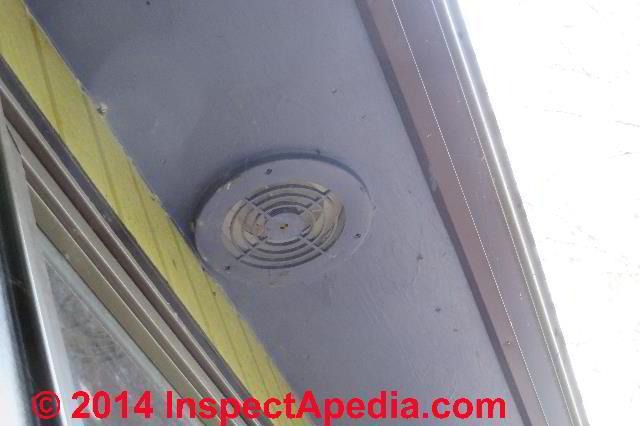Ask the Builder: Exhaust from bathroom fan must vent outside
Q: I have had three contractors over to my house and received three different answers about how my bathroom fan should exhaust. I’m beyond frustrated. How are we homeowners supposed to protect our largest investments, our homes, if maintenance advice is wrong? I have read online about serious mold and wood-rot problems caused by bath fans. I’m confident you will be able to give me the correct answer. I wish you lived in my town, so I might bump into you for advice at the grocery store from time to time! Sharon P., Evanston, Ill.
A: Do you wring your hands, like Sharon is undoubtedly doing, each time you have to spin the wheel hoping it stops on the correct contractor to work on your home? Can you imagine signing a contract for $1,000, $5,000 or even $50,000 while hoping everything is going to work out?
I don't know about you, but I hope only for things that I can’t control, such as the weather, and the next time the giant fault 60 miles west of Portland, Oregon, under the ocean is going to unzip its entire length and unleash a mammoth tsunami. Yes, geology was my college major, but I digress.
Now think about what a bath fan really is. When you take a hot, steamy shower, the fan is a pump. It pumps hundreds and hundreds of cubic feet of moist air to some remote location. The last place you want this air to be is inside your attic space. The moist air will fuel the growth of mold and mildew on the roof framing and the sheathing that covers the timbers. Wood rot is an absolute certainty over time if you dump bath exhaust into an attic.
This moist air must exhaust to the exterior of your home. This is non-negotiable.

But it can’t just exit anywhere. The best place for it to exit is through your roof. The hot moist air is dumped onto your shingles or other roof covering that is made to get wet. However, you can’t do this if you live in a cold climate where snow can build up on a roof. Here in New Hampshire where I live, it’s entirely possible to have 2 feet, or more, of snow cover on a roof. Snow can cover the vent outlet and the moist air has nowhere to go.
The next best location for a bath fan cap is a wall that is at least 3 to 5 feet from a roof overhang. Most roof overhangs today have continuous soffit ventilation strips. Bath exhaust is almost always warm, and this air will float up and into the soffit ventilation openings. You now have put the water right back up into the attic without realizing it.
Just a year ago, I saw the absolute best bath exhaust fan roof cap. I wish it had been available when I built houses. It is made by Lifetime tool, the manufacturer of the best plumbing vent-pipe flashings. This cap will work well for tens of millions of homes that never see a snowflake.
The pipe that extends from the fan to the exterior of your home needs to be a solid galvanized metal pipe or an approved insulated flex duct that might be part of a kit for a remote bath fan where the fan is far away from the bathroom. If you use sections of metal pipe, be sure to tape each joint with the true metal duct tape used by HVAC contractors. Don't use fabric duct tape from a home center.
Pay close attention to the installation instructions published by the fan manufacturer. They state how many elbows can be in the piping and how long the piping can be. Don’t exceed these limits.
I urge you to always read installation instructions before you talk to contractors. Ask pointed questions of the contractors to see whether they really know how to install something. Remember, no truly professional contractor will be offended by your questions. Ask away!
Tim Carter writes for the Tribune Content Agency. Visit www.askthebuilder.com for videos and information on home projects.







